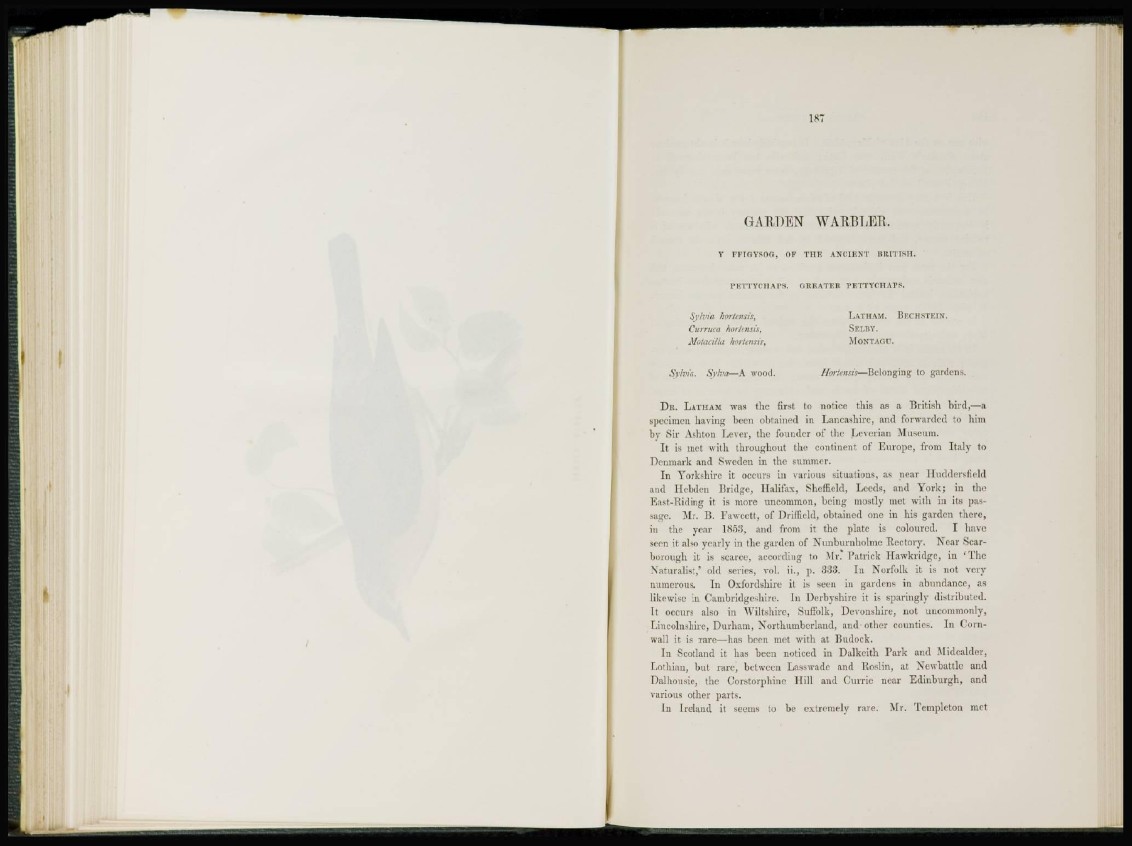
GARDEN WARBLER.
Y FFIGYSOG, OF THE ANCIENT BRITISH.
PETTYCIlACS. GREATER PETTYCHAPS.
Sylvia horiensis, LATHAM. BECHSTEIN.
Curruca horiensis, SRLBY.
Molacilla horiensis, MONTAGU.
Sylvia. Svlva—A wood. Horiensis—Belonging to gardens.
D R . LATHAM was the first to notice this as a British bird,—a
specimen having been obtained in Lancashire, and forwarded to him
by Sir Ashton Lever, the founder of the Leverian Museum.
I t is met with throughout the continent of Europe, from Italy to
Denmark and Sweden in the summer.
I n Yorkshire it occurs in various situations, as near Huddersfield
and Hebden Bridge, I lalifax, Sheffield, Leeds, and York; in the
East-Riding it is more uncommon, being mostly met with in its passage.
Mr. B. Fawcett, of Driffield, obtained one in his garden there,
in the year 1853, and from it the plate is coloured. I have
seen it also yearly in the garden of Nunburnholme Rectory. Near Scarborough
it is scarce, according to Mr. Patrick Hawkridgc, in ' T h e
Naturalist,' old series, vol. ii., p . 333. In Norfolk it is not very
numerous. In Oxfordshire it is seen in gardens in abundance, as
likewise in Cambridgeshire. In Derbyshire it is sparingly distributed.
I t occurs also in Wiltshire, Suffolk, Devonshire, not uncommonly,
Lincolnshire, Durham, Northumberland, and other counties. In Cornwall
it is rare—has been met with at Budock.
I n Scotland it has been noticed in Dalkeith Park and Midcalder,
Lothian, but rare, between Lass wade and Roslin, at Ne what tie and
Dal lionsie, the Corstorphine Hill and Currie near Edinburgh, and
various other parts.
In Ireland it seems to be extremely rare. Mr. Templeton met